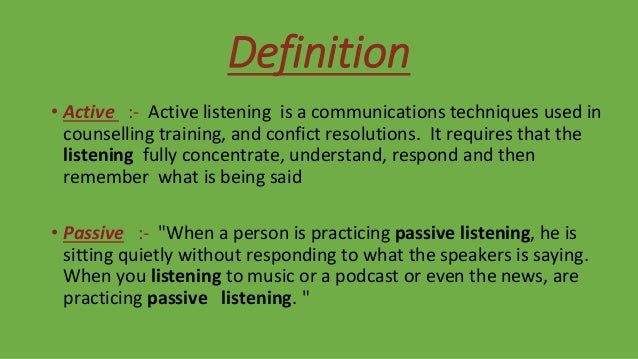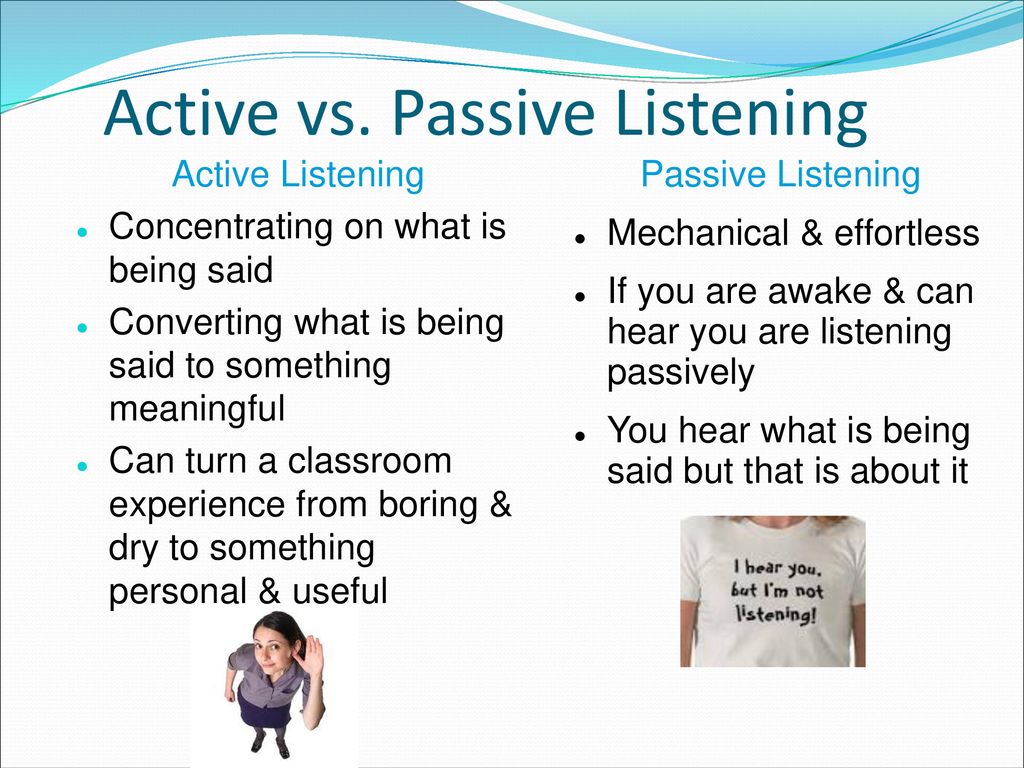Active listening in contrast requires you to get inside the speakers head so that you can understand the communication from their point of view. Both types are starkly different and have certain characteristics that distinguish one from the other.
 Show Me Passive Listening Characteristics Skilly Active Listening Skilly
Show Me Passive Listening Characteristics Skilly Active Listening Skilly
On the other hand the same dictionary defines listening as to hear something with thoughtful attention In their definitions alone its clear to see the big difference between the two.

Passive vs active listening. Active listening is when you focus your attention to fully understand and comprehend what someone is saying. In passive listening the listener has a negative attitude which is demonstrated through selective and ignoring attitude. In passive listening youre like a recorder.
While passive listening is associated with mere hearing active listening refers to listening in order to understand. Active and passive listening is as various as listening with attention and hearing it on the run without any focus or attention. Listening to native speakers in conversations and listening very carefully to exactly how they use certain expressions While passive language learning is the kind of stuff that feels warm cosy and familiar active learning often feels difficult and tiring.
Active listening is reacting while listening in order to emphasize understanding but passive listening is listening without reacting or responding. So what is the difference between passive and active listening. Active listening is much different.
Ive been reading on the progress on some people on here and I find it quite amazing when people say I listen to about 6 hours of audio a day It had me thinking that I wonder how people could fit that time within the day. In active listening the listener encourages the speaker to speak up further by showing interest in the conversation. What are the main differences between active listening and passive listening.
A tip for enhancing your listening experience. Passive listeners do not react. Passive listening is pretty instinctual for us to implement but active listening takes a couple of skills.
In passive listening the listener may appear to be listening to the speaker and her words but makes no effort to understand the message. For example listening requires our capacity to get and decipher the information and understand it fully though hearing is an involuntary auditory response perceived by the brain. While active listening is an interactive process passive listening is a mechanical process.
Active listeners react to what theyre hearing with nonverbal cues paraphrasing or repetition and questions. Active listening is when the listener is fully engaged and reacts to the ideas presented by the speaker. Whenever you listen to music while you are doing something else such as studying or doing chores you are passive listening.
It can either be categorized as active or passive listening. Read on to find out the difference between active listening vs passive listening and if one is better than the other. In passive listening the listener does not react to the ideas of the speaker but merely listens.
In many cases you will be providing feedback either. So what is passive listening. Active listening is a two-way communication.
Passive listening is a one way communication. Active vs Passive Listening. In active listening the listener.
As you might imagine active listening is different than passive listening. However they are each very different and thus they are useful in different types of situations. In active listening the listener has a positive attitude which is demonstrated through body language eye contact and reception.
You absorb the information given. Passive listening is hearing something or someone without giving it your full attention. Both active and passive listening have their places where they are effective.
They are often pitted against one another as though passive listening is bad and active listening is superior. Listening requires attention meaning its active. Reactions of the Listener.
Generally in active listening we are genuinely interested hearing and understanding the other persons point of view. The difference is the amount of attention or processing effort our brain puts into understanding what is being said. With active listening we use our full effort and attention whereas with passive listening our attention is focused elsewhere.
Active listening is for listening for feelings and reflects understanding while passive listening results in a distraction from the topic. Unlike the active listener the passive listener is not paying attention. Active listening is best for two-way communication whereas passive listening is best for one-way communication.
Hearing is passive you cant close your ears so sounds will enter and be heard.
 20 Active Listening Ideas Active Listening Listening Listening Skills
20 Active Listening Ideas Active Listening Listening Listening Skills
 Active Listening Listening Is The Process Of Receiving
Active Listening Listening Is The Process Of Receiving
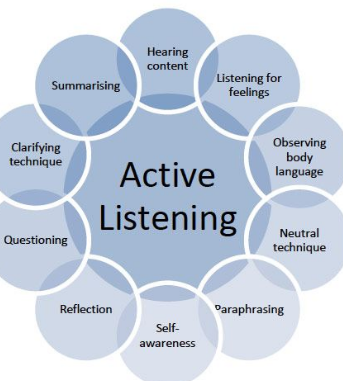 Active Listening Vs Passive Listening 8 Major Differences With Examples Viva Differences
Active Listening Vs Passive Listening 8 Major Differences With Examples Viva Differences
 Active Learning Vs Passive Learning Good Listening Skills Learning Activities Learning Theory
Active Learning Vs Passive Learning Good Listening Skills Learning Activities Learning Theory
 Active And Passive Listening Presentation
Active And Passive Listening Presentation
 Hearing Vs Listening Mastering Communication
Hearing Vs Listening Mastering Communication
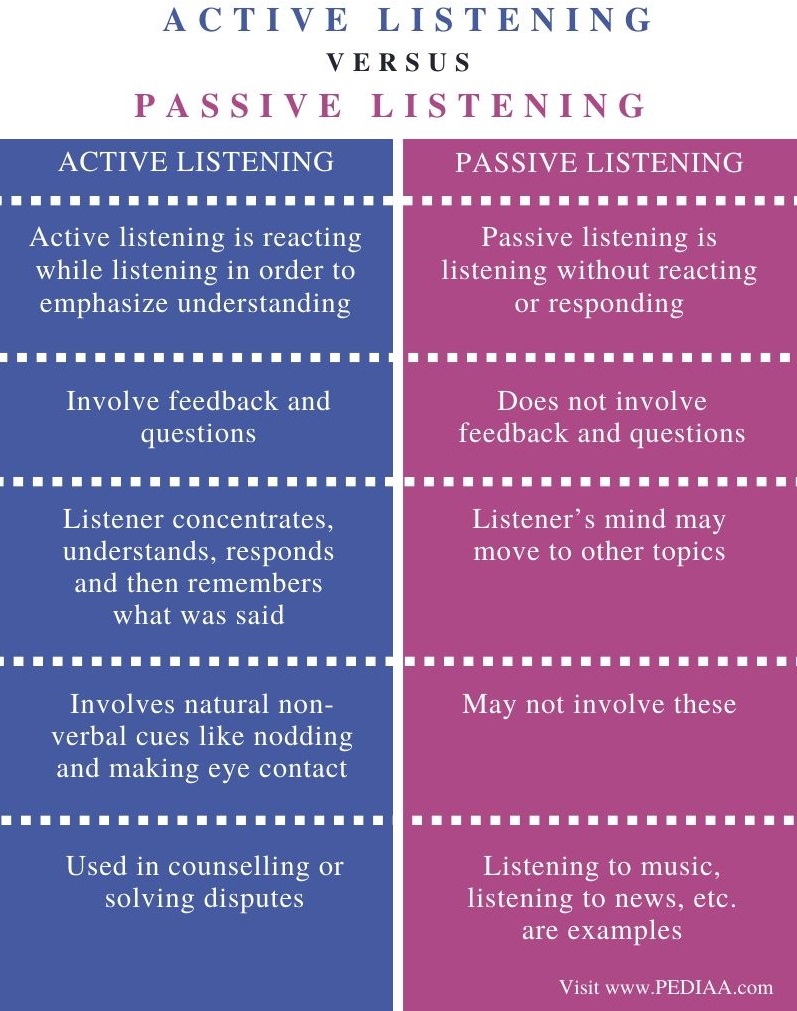 What Is The Difference Between Active And Passive Listening Pediaa Com
What Is The Difference Between Active And Passive Listening Pediaa Com
 Sales Training 10 Tips To Help You Develop Effective Listening Skills
Sales Training 10 Tips To Help You Develop Effective Listening Skills
 Listening Skills Powerpoint Slides
Listening Skills Powerpoint Slides
The Tao Of Effective Listening Yin And Yang Of Listening Listening To Emotins And Active Listening
 Active Vs Passive Listening Page 3 Line 17qq Com
Active Vs Passive Listening Page 3 Line 17qq Com
.jpeg) What One Need To Know About Listening Steemit
What One Need To Know About Listening Steemit
/active-listening-skills-with-examples-2059684-finalv1-ct-8f9549d650aa46318b5d0351fdab9759.png) Important Active Listening Skills And Techniques
Important Active Listening Skills And Techniques
 Difference Between Active Listening And Passive Listening With Barriers To Active Listening Examples And Comparison Chart Key Differences
Difference Between Active Listening And Passive Listening With Barriers To Active Listening Examples And Comparison Chart Key Differences
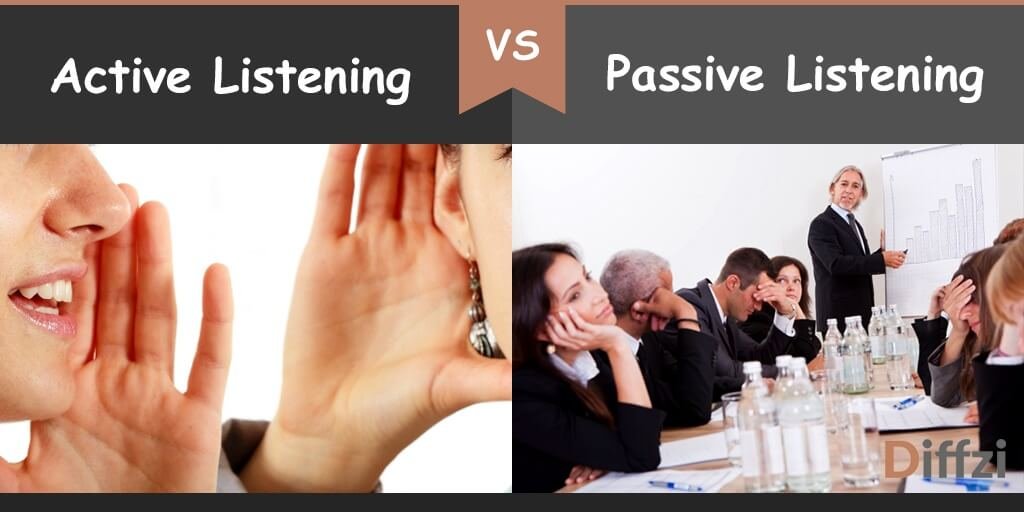 Active Listening Vs Passive Listening What Is The Difference Diffzi
Active Listening Vs Passive Listening What Is The Difference Diffzi
 Better Communication With Listening Skills Infographic 3 Plus International
Better Communication With Listening Skills Infographic 3 Plus International
Cari Blog Ini
Label
- 1800s
- 1820s
- 18th
- 1920s
- 50th
- about
- absence
- absent
- absolute
- abstract
- academic
- academy
- accelerated
- accent
- accents
- accept
- acceptance
- access
- account
- accounting
- accreditation
- accredited
- acronym
- acting
- active
- activities
- adaptation
- address
- addressing
- administration
- admission
- admissions
- adulta
- adults
- advantage
- advantages
- adverb
- adversity
- affairs
- affect
- africa
- after
- agencies
- agency
- agent
- agents
- airforce
- alarm
- alexander
- algebra
- allowed
- alpha
- alphabet
- amber
- america
- american
- americans
- analysis
- analyze
- anatomy
- ancient
- anglo
- animal
- anthropology
- anyone
- anything
- apartment
- apostles
- appalachian
- applicants
- application
- applied
- apply
- applying
- aptitude
- arabic
- architects
- area
- argument
- argumentative
- aristotle
- army
- arrive
- arrows
- article
- artifact
- artifacts
- artistry
- arts
- aruba
- assessment
- assessments
- assimilation
- assistant
- associate
- associates
- asterix
- asvab
- athletic
- attacked
- attend
- attention
- attila
- autobiographical
- autobiography
- average
- aztec
- bachelor
- bachelors
- back
- bags
- bald
- balls
- bank
- banking
- based
- beads
- beautiful
- because
- become
- becoming
- beginner
- beginners
- behavior
- behaviorism
- behaviors
- being
- beliefs
- bella
- below
- benchmark
- benefits
- best
- better
- between
- bible
- biochemistry
- biologists
- biology
- black
- blackbeard
- blend
- blends
- bloom
- boarding
- boats
- book
- boys
- brain
- breaker
- breakers
- breaking
- breaks
- broadcasting
- broker
- bronx
- bulb
- burlap
- business
- bypass
- caddos
- calculate
- calculating
- calculator
- calculus
- call
- called
- cameras
- campaign
- campbell
- canada
- candle
- candles
- capitalize
- card
- cardinal
- cardiologist
- cards
- care
- career
- caribbean
- catapult
- catapults
- catcher
- categorical
- cbest
- center
- central
- ceremony
- certificate
- certification
- challenges
- change
- changes
- changing
- character
- characteristics
- characters
- charlotte
- cheat
- check
- cheerleaders
- cheerleading
- chemical
- chemistry
- cherokee
- child
- choctaw
- choices
- choose
- chose
- christ
- christmas
- churches
- ciao
- city
- civilization
- claims
- class
- classes
- classroom
- clause
- clean
- cleanse
- closing
- clothes
- clothing
- coaches
- coalinga
- coast
- cogat
- college
- colleges
- colonies
- colony
- color
- colors
- comma
- commercial
- common
- communication
- communicator
- community
- competent
- completed
- components
- comprehension
- computer
- concept
- conclude
- concluding
- conclusion
- conclusions
- concrete
- conflicts
- conjugation
- cons
- consonant
- constructivism
- constructivist
- content
- contextual
- contract
- contrast
- contributions
- convert
- cooked
- cooking
- cool
- copy
- core
- cosmetology
- cost
- could
- council
- count
- countries
- course
- courses
- cover
- create
- created
- creating
- creative
- credibility
- credits
- criminal
- criterion
- critical
- critique
- cross
- cultural
- culture
- cultures
- cuny
- currency
- currently
- curriculum
- cursive
- curve
- curves
- custom
- customs
- cute
- cutting
- cypress
- dabate
- dallas
- damaging
- dance
- dangling
- data
- date
- dates
- deactivate
- deans
- debates
- decisions
- declaration
- decline
- decoding
- defensive
- definition
- definitions
- degree
- degrees
- delta
- democrats
- denny
- dependent
- dependents
- dermatologist
- descriptive
- deserve
- design
- designing
- development
- device
- devices
- diagnostic
- dialogue
- dialysis
- dibels
- diction
- difference
- differences
- different
- diploma
- directional
- director
- disabled
- disadvantages
- disciples
- discuss
- discussion
- divison
- doctor
- doctorate
- does
- donate
- donation
- donna
- dont
- dorm
- dorms
- double
- download
- dramatic
- draw
- drawing
- dream
- drop
- dual
- eagle
- earn
- easiest
- ecological
- ecology
- education
- effect
- egypt
- egyptian
- egyptians
- election
- elections
- electrical
- elementary
- elizabethan
- elongate
- emergency
- emory
- employees
- encoding
- ending
- engine
- engineer
- engineerig
- engineering
- england
- english
- enhanced
- entrance
- envelope
- enviorment
- environmental
- erase
- essay
- essays
- estate
- ethical
- ethics
- european
- evaluate
- events
- exactly
- exam
- example
- examples
- excel
- except
- expelled
- expenses
- experiment
- expository
- expulsion
- facs
- fact
- facts
- fafsa
- fail
- failed
- fair
- fake
- fall
- family
- farm
- fashion
- fasion
- faster
- features
- federal
- feudalism
- field
- files
- fill
- film
- final
- financial
- find
- fine
- finish
- finishing
- fire
- firenze
- first
- flag
- flakes
- flashlight
- fleur
- florida
- food
- foods
- football
- foreign
- forensic
- format
- forms
- foster
- founded
- four
- fourth
- framework
- free
- french
- freshman
- freshmen
- friendly
- friends
- from
- full
- function
- fund
- funded
- funny
- gaelic
- game
- games
- geds
- general
- genghis
- genres
- geography
- georgia
- german
- germany
- gesell
- getting
- give
- glasses
- globalization
- glue
- gmail
- goals
- gold
- good
- goodbye
- goodnight
- government
- gown
- gpas
- grabbers
- grade
- graders
- grades
- grading
- graduate
- graduates
- graduating
- graduation
- grammar
- grandchildren
- grant
- grants
- greece
- greek
- group
- growth
- guide
- guides
- guitar
- gulf
- gunsmithing
- gwam
- hair
- hand
- handed
- hands
- happens
- happy
- hard
- harvard
- have
- having
- hbcu
- head
- heading
- hebrew
- hellen
- hellenistic
- hello
- hemodialysis
- high
- higher
- highschool
- hills
- historically
- history
- hobbes
- home
- homecoming
- homes
- homeschool
- honor
- honorary
- honors
- hopkins
- hospital
- hospitality
- hours
- house
- housing
- however
- human
- humane
- humanitoes
- humans
- hvac
- icebreaker
- icebreakers
- idea
- idealism
- ideals
- ideas
- identify
- identifying
- immigrants
- impact
- impacts
- impeach
- imperialism
- importance
- important
- improve
- inaugural
- included
- income
- independence
- india
- indian
- indoor
- induction
- industrial
- influence
- Information
- initiation
- instead
- institute
- interactive
- interesting
- intergrated
- internship
- interpersonal
- intership
- interview
- into
- introduction
- introductions
- invented
- invention
- inventions
- invitation
- involve
- iranians
- ireland
- irish
- iroquois
- italian
- items
- jeffersonian
- jeopardy
- jersey
- jesuit
- jesus
- jobs
- join
- joining
- junior
- juniors
- justice
- kaplan
- kappa
- katana
- kaufman
- keller
- khan
- kids
- kill
- kind
- kindergarten
- know
- known
- labor
- lady
- language
- languages
- large
- last
- late
- latin
- lawyer
- league
- learn
- learned
- learning
- length
- lesson
- lessons
- letter
- letters
- level
- levels
- liberal
- license
- licensed
- life
- lifestyle
- light
- like
- limit
- list
- listening
- lists
- literacy
- literal
- literature
- little
- living
- loan
- loans
- local
- locker
- login
- long
- longer
- longitude
- look
- lords
- love
- luck
- macroeconomic
- made
- main
- mainstreaming
- major
- majors
- make
- makes
- making
- males
- manage
- management
- many
- marine
- marketing
- mascot
- maslow
- maslows
- master
- masters
- mates
- math
- matter
- mayor
- mcat
- mean
- meaning
- means
- media
- medical
- medicine
- medium
- memorize
- memory
- meps
- mesopotamian
- methods
- mexico
- middle
- migrant
- military
- mini
- minimum
- minor
- minute
- miss
- mitchell
- mnemonic
- mockingbird
- modeling
- models
- modern
- modernism
- modernist
- money
- monitor
- monitoring
- morning
- mortar
- most
- movie
- moving
- much
- multicultural
- multiple
- music
- musical
- name
- names
- national
- native
- nature
- navy
- nclex
- near
- need
- needed
- needs
- negative
- negro
- nelson
- neonatal
- netflix
- newspaper
- nkjv
- nominative
- norm
- nostalgic
- notification
- noun
- nouns
- nova
- number
- numbered
- nurse
- nurses
- nursing
- nusing
- obgyn
- object
- objective
- objects
- obtain
- occupational
- oceanographer
- offer
- ohio
- oneself
- online
- open
- opening
- operations
- optometry
- order
- outfitters
- outline
- overall
- overcoming
- overthrow
- pacer
- page
- paper
- papers
- paragraph
- part
- partial
- participle
- parts
- pass
- passing
- passive
- patients
- patterns
- paul
- pell
- penn
- people
- percent
- percentages
- percentile
- performance
- performing
- period
- persian
- personal
- perspective
- persuasive
- pharmacology
- pharmacy
- phoenix
- phonics
- photochemical
- photographic
- photography
- photos
- phrase
- physical
- physician
- physiology
- pictures
- pilot
- placement
- plan
- plant
- plasma
- plastic
- plato
- play
- plays
- pledge
- pledging
- plot
- plural
- poem
- poetry
- point
- pointillism
- pole
- polish
- popcorn
- popular
- population
- portfolio
- positive
- possessive
- post
- postcard
- practice
- predicate
- predicated
- preoperational
- prep
- prepare
- prepositional
- preschool
- preschoolers
- prescriptive
- presentation
- press
- pressure
- preterite
- prima
- primary
- printable
- printing
- priority
- private
- probability
- production
- products
- professor
- program
- programs
- progress
- project
- projects
- prom
- pronoun
- pronounce
- pronouns
- proofreading
- proportion
- pros
- protective
- psychology
- public
- puerto
- purpose
- puzzle
- quantitative
- quarter
- question
- questions
- quickly
- quintile
- quoting
- radiologist
- radiology
- raise
- raising
- range
- ratio
- reached
- reading
- realism
- reasons
- rebus
- recognition
- recognize
- recommendation
- referenced
- reflection
- reflective
- reflexive
- refuge
- regents
- regional
- regions
- register
- reinforcement
- reinforcer
- release
- reliability
- relic
- religion
- remember
- remove
- removing
- rent
- repair
- repay
- repeating
- replace
- report
- reports
- require
- required
- requirement
- requirements
- research
- residents
- respected
- respiratory
- results
- resume
- retake
- reunion
- reunions
- review
- revolution
- rhetorical
- rhit
- rica
- ride
- rituals
- rock
- role
- roles
- room
- root
- rotc
- rubric
- rules
- rush
- salaries
- sale
- same
- sample
- samples
- samurai
- sang
- sanskrit
- satire
- saxon
- scantron
- scared
- scene
- schol
- scholarship
- scholarships
- school
- schooling
- schools
- science
- score
- scores
- scoring
- scotland
- scottish
- seals
- second
- secondary
- section
- sectional
- security
- self
- sell
- sells
- send
- senior
- seniors
- sentence
- sequence
- sequential
- service
- setting
- setup
- sewn
- sheet
- shoe
- short
- should
- show
- siblings
- side
- sight
- sigma
- sign
- simple
- simularitys
- sized
- skill
- skills
- skip
- sleeves
- small
- smog
- social
- society
- software
- some
- someone
- someones
- song
- songs
- sorority
- sound
- sounds
- soup
- source
- spaces
- spanish
- speak
- speaker
- speakers
- speaking
- speech
- speeches
- spell
- spirit
- spoken
- sports
- square
- stages
- stamped
- stand
- standardized
- stanford
- start
- state
- statement
- statements
- states
- statistics
- stay
- steps
- sticks
- stna
- stoles
- stone
- stop
- stopped
- stories
- strategies
- strengths
- structures
- student
- students
- studies
- study
- style
- styles
- subject
- submit
- suffixes
- suite
- summarize
- summarizing
- summary
- summer
- sung
- surgeon
- survival
- suspended
- suspension
- swedish
- syllables
- symbol
- system
- systems
- table
- tables
- take
- talent
- talk
- tampa
- tassel
- tassels
- tbas
- teach
- teacher
- teachers
- teaching
- team
- teams
- technical
- technician
- technology
- teepee
- template
- tenses
- terminology
- terra
- test
- testing
- tests
- texas
- than
- thank
- that
- their
- theme
- themes
- theoretical
- theory
- there
- thesis
- things
- thought
- three
- tier
- tiers
- timberline
- time
- times
- tips
- title
- titles
- toastmasters
- today
- tone
- topics
- toys
- traditional
- training
- transcript
- transfer
- transferring
- transition
- translate
- translated
- treasurer
- trebuchet
- trenton
- trial
- tribes
- tribute
- trip
- tuition
- turning
- tutor
- tying
- type
- types
- typing
- ucla
- under
- undergraduate
- uniforms
- union
- united
- units
- universities
- university
- used
- using
- valedictorian
- validate
- validity
- value
- values
- variables
- varsity
- vassar
- verb
- verbal
- verbs
- verizon
- veteran
- veterinarian
- video
- videos
- view
- views
- viking
- villanova
- virginia
- voice
- volleyball
- vowel
- want
- warrant
- washington
- watch
- ways
- weaknesses
- weapons
- wear
- wearers
- weather
- weighted
- welfare
- were
- wesleyan
- west
- what
- whats
- wheel
- when
- where
- which
- while
- white
- whom
- widow
- wigs
- will
- window
- windows
- with
- without
- women
- wonderlic
- word
- words
- work
- workers
- works
- world
- worry
- worship
- worth
- write
- writing
- xenia
- xray
- year
- yearbooks
- years
- yellow
- york
- young
- your

